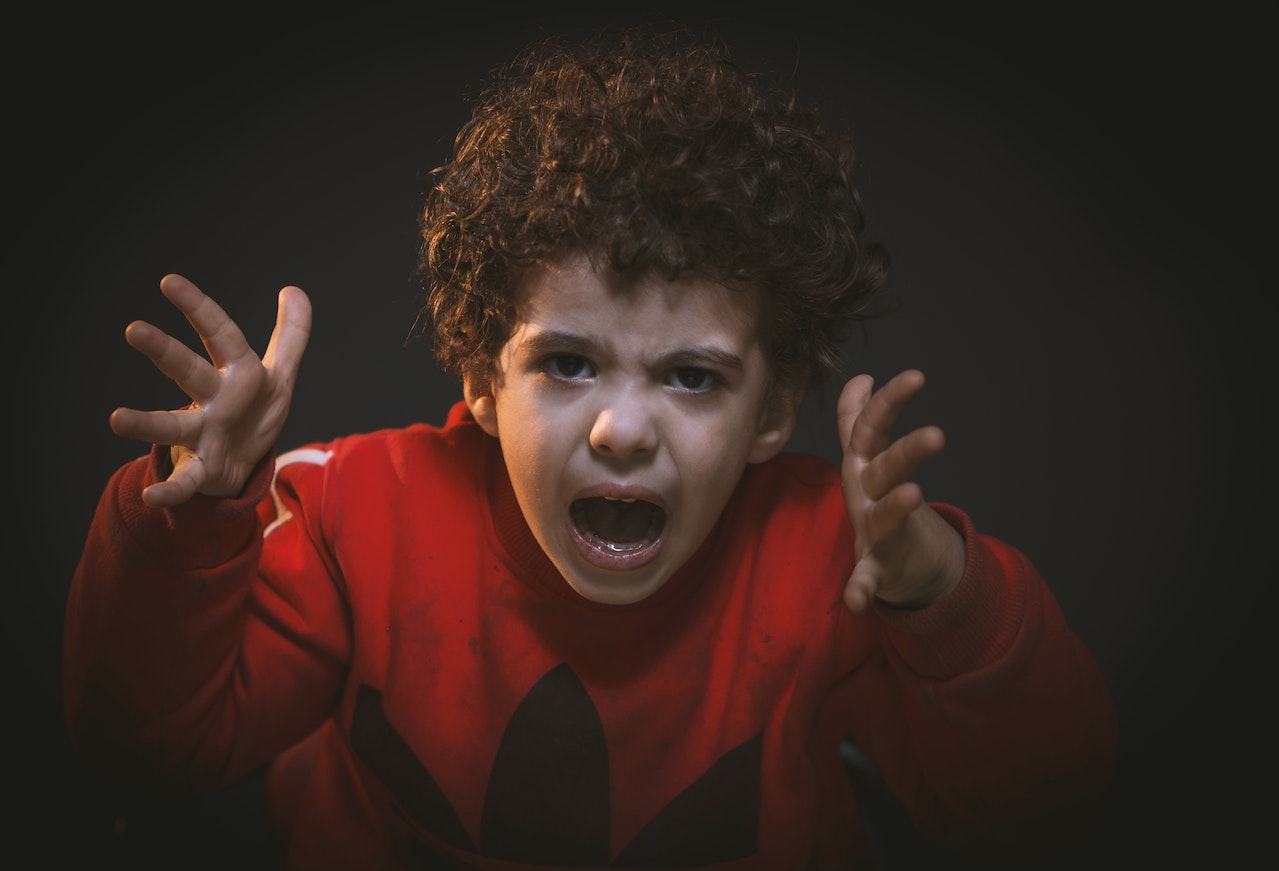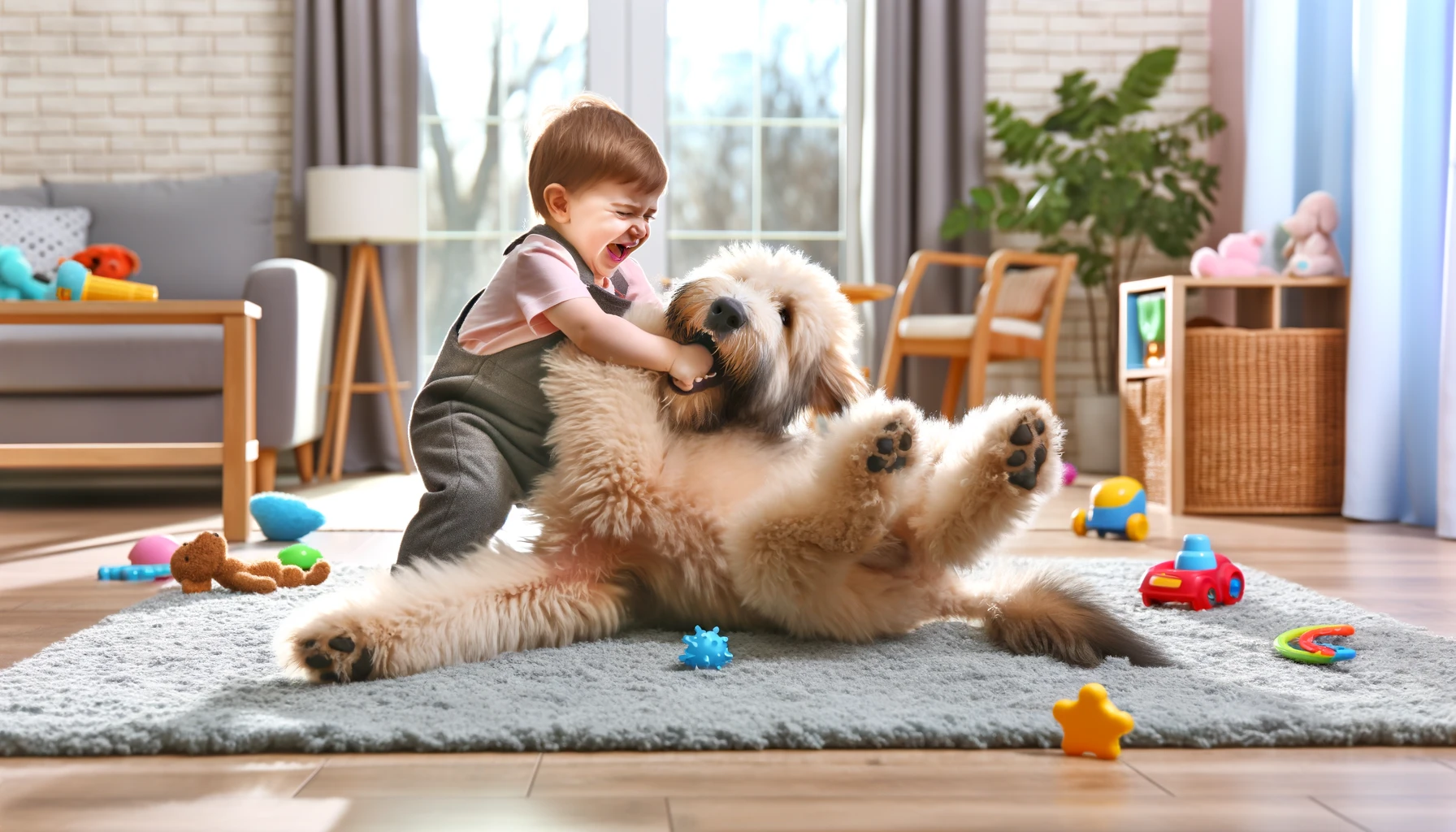Parenthood: that magical time in your life when the fruit of your loins can transform from an angel-faced cherub into a screaming banshee at the drop of a hat. You’ve read the parenting books, you’ve scoured the Internet, and you’ve even braved the judgmental stares at the grocery store when your little one decided to reenact a scene from “Godzilla” in the cereal aisle. But fear not, weary guardian, for I bring you tidings of great joy — and by joy, I mean tips wrapped in the comforting blanket of humor, because if we can’t laugh at the face of a toddler tantrum, are we even parenting?
The Archaeological Dig into the Roots of Aggression
Before we embark on our quest to tame the tiny beasts of fury that we lovingly call our offspring, let’s take a moment to don our metaphorical Indiana Jones hats and delve into the ancient ruins of Childish Aggressivitopia. Yes, we’re going on a thrilling archaeological dig into the roots of aggression. Grab your whips (just kidding, those are for Indiana only) and let’s crack the code on what fuels these little rage-machines.
Understanding the source of aggression in children is like trying to figure out why there’s always that one sock missing after laundry day. There are theories, sure, but the truth is often shrouded in mystery and half-eaten fruit snacks. Nonetheless, scholars (and by scholars, I mean frazzled parents and child psychologists with less sleep than a bat during the daytime) have pinpointed a few likely culprits.
- First, there’s the ever-popular “Frustration Equals Agitation” theory. Young children, bless their hearts, have the emotional regulation of a blender without a lid. They want something, they can’t have it, and boom! Emotional smoothie all over the kitchen walls. They can’t articulate that they’re miffed because the laws of time and space prevent them from eating dinner for breakfast, so they express it through the international toddler sign language of kicks, screams, and the occasional headbutt.
- Then there’s the “Monkey See, Monkey Do” hypothesis. Kids are like tiny, absorbent sponges, soaking up everything from language to behavior. So if they see their favorite cartoon character resolving conflict by bopping another on the head, well, imitation is the sincerest form of flattery, right? That’s why it’s crucial to keep an eye on their media diet because you never know when they’ll turn into mini mimics of whatever superhero just karate-chopped their way out of a problem.
- Let’s not forget the genetic cocktail party theory. Sometimes, the roots of aggression can be as innate as the color of their eyes or their uncanny ability to wiggle their ears. Some children are simply born with a more, let’s say, ‘spirited’ temperament. They’re the ones leading the charge into every mud puddle, every unguarded makeup bag, and every public tantrum nightmare. It’s not their fault; they’re pre-wired to be the life of the party, even if the party is in time-out.
- Another intriguing aspect of our dig is the “Copycat Conundrum.” Children are notorious for their mimicry skills, and they often copy the behavior they see in their own Jurassic Park, also known as home. If a child witnesses aggression in their habitat, whether from siblings, parents, or that aggressive peacock on the nature show, they’re likely to think it’s as normal as refusing to eat crusts on their sandwiches.
- Finally, we must consider the “Trial and Error” philosophy. In the grand experiment of growing up, children are the mad scientists, and aggression can be an accidental discovery. They try it once, it gets them what they want (attention, the last cookie, control over the TV remote), and voila, it’s added to their arsenal faster than you can say, “Please don’t draw on the dog.”
So, as we brush off the dirt from our child-psychology dig, remember that understanding the roots of your child’s aggression is the first step towards managing it. Like a garden, if you tend to the roots, the entire plant will flourish. And with this knowledge firmly planted, let’s proceed to aggression management steps with a new appreciation for the complex little ecosystems our children really are.
Strategies to Handle Aggressive Behavior
1. Now, step one in our guide to taming the beast is to remain calm. When your offspring is going full Mortal Kombat over not being able to wear swim goggles to bed, it’s crucial that you keep your cool. Remember, you are the adult, the big cheese, the Zen master. If you start flipping your lid every time they do, you’re essentially competing in the emotional Olympics, and trust me, they have more stamina than a caffeinated squirrel.
2. Step two is all about understanding. Try to get down to their level — literally, squat if you have to — and look them in the eye. Ask yourself, what is this tiny human trying to communicate? Are they tired, hungry, or have they decided that today is the day they make a passionate stand against socks with seams? Empathy is your friend, even if it feels like your child is channeling Attila the Hun.
3. Thirdly, consistency is key. Like a sitcom with too many plot twists, children need predictability. Set clear boundaries and consequences, and stick to them like glue on your favorite book’s pages because little Timmy thought it was a sticker album. When your child knows what to expect if they cross the line, they’re less likely to do the Macarena over it.
4. Another gem of wisdom is to encourage the use of “I feel” statements. It’s like giving your child a script for a more peaceful episode of their life. Instead of throwing blocks when they’re upset, teach them to say, “I feel like you should experience the aerodynamics of this Lego, but I will use my words instead.” It’s a work in progress, but it’s about setting the stage for emotional literacy.
5. Let’s not forget about positive reinforcement. Catch your child being good and make a bigger fuss over it than the latest celebrity scandal. “Wow, Johnny, you asked for the toy so nicely, I’m going to sing your praises like I’m auditioning for ‘American Idol.'” Positive attention is like catnip for kids; they’ll keep coming back for more.
6. Also, remember that activity is your ally. Children have more energy than a power plant, and it needs to be channeled appropriately. Organized sports, playdates, and the old-school method of running around outside (yes, the place with the trees) are all excellent ways to prevent your living room from becoming a WWE ring.
7. But what if the Hulk-smash moment is upon you? Distraction and redirection can be as powerful as a Jedi mind trick. “Oh, you want to throw that toy car? How about we race it on this track instead?” It’s about sleight of hand, dear parent. Distract them with the right hand so they don’t realize you’ve just averted disaster with the left.
8. Lastly, remember that you’re not alone. Join a support group, chat with other parents, or even start a blog. Sharing your tales of survival can be therapeutic. Plus, it gives you an excuse to use phrases like “navigating the tempestuous seas of parenthood” while bonding with others who’ve weathered the same storms.
Pop Quiz
Let’s recap with a pop quiz, because nothing says “I love parenting” like a good old-fashioned test, am I right?
Question 1: When your child starts acting like they’re auditioning for “Fight Club: Toddler Edition,” what’s your first move?
- A) Scream into the nearest pillow.
- B) Challenge them to a dance-off.
- C) Channel your inner Buddha and stay calm.
If you answered C, congratulations! You’re already on your way to becoming a child aggression whisperer.
Question 2: Your child has just painted the cat. Do you:
- A) Take a picture for the ‘Gram. #ArtisticKid #FuturePicasso
- B) Consider whether the cat might enjoy a second career as a living canvas.
- C) Clean the cat and discuss appropriate canvases for future art projects with your child.
While A might be tempting for the likes and laughs, C is the way to handle it with grace and hygiene for Mr. Whiskers’ sake.
Question 3: If your little darling has morphed into a tiny dictator refusing to wear anything but a superhero cape to school, do you:
- A) Consider if capes might be the next trend in business casual.
- B) Let them go as is and hope they start a new school fashion trend.
- C) Compromise with a superhero shirt and save the cape for after-school adventures.
If you went with C, you’ve mastered the art of negotiation with a pint-sized human. Well done!
These multiple-choice moments are brought to you by the reality that parenting an aggressive child often means thinking on your feet, making the best of bizarre situations, and maintaining a sense of humor when you’re faced with decisions that you never thought you’d have to make. Like whether it’s acceptable to use a superhero cape as a tablecloth in a pinch (it is, by the way, as long as it’s clean).
In the grand tapestry of parenting, these aggressive outbursts are but minor snags in the overall pattern. It’s important to remember that this phase, like so many others, is just that — a phase. It too shall pass, often like a kidney stone, but it will pass.
So, arm yourself with these snippets of advice, the real wisdom hidden within, and a hefty stash of chocolate or your stress-relief vice of choice. You’re doing the noble work of shaping the future generation, after all. You’re teaching them to use their words, not their fists, or the household pets, or the remote control as tools for expression.
And when the day is done, and your little one is finally asleep, take a moment to reflect on the victories, no matter how small. Celebrate the fact that today there were only three time-outs instead of five, or that the cat was only moderately glittered and not completely bedazzled.
Stay strong, valiant nurturer of the next generation. Keep your head high and your sense of humor fully intact!
Pro Tips to Bookmark for Your Next Toddlerpocalypse
- Master the Art of Distraction: Keep a mental list of your child’s favorite distractions ready to deploy. Whether it’s a sudden interest in finding the “biggest leaf in the yard” or a surprise “dance party” in the living room, sometimes a well-timed diversion is like hitting the reset button on your child’s mood.
- Build a ‘Cool Down’ Corner: Unlike the infamous ‘naughty step’, a ‘cool down’ corner is a positive space filled with calming activities and items. It’s not a punishment, it’s a respite. Think fluffy pillows, favorite books, or a soft toy. It’s like a spa for their emotions.
- Talk it Out (Even if They Can’t): Narrate the problem and potential solutions. “You seem frustrated because the block tower won’t stay up. That happens to me when I try to balance my checkbook. Let’s try building it together.”
- Exercise: The Miracle Cure: Regular physical activity can work wonders. It’s like taking your child’s built-up aggression and letting it loose on the playground, where it belongs. Plus, they come back tired, and there’s nothing quite as beautiful as a peacefully snoozing toddler.
- Be a Behavior Detective: Play detective and look for patterns. Does the aggression come at a certain time of day? In response to certain foods or lack of sleep? Like a good episode of a crime drama, look for the clues that lead to the meltdown culprit.
- Routine is Your Best Friend: Establishing a predictable routine can reduce anxiety and therefore aggression. It’s like a TV series; kids feel better when they know what’s coming next, except for those season finales that end on a cliffhanger.
- Use Your Words Wisely: Instead of “use your words,” try prompting with, “Tell me with your words what you need.” It’s more specific and gives them a clearer script to follow. This is about as close as you’ll get to programming your child for peace.
- Selective Ignoring: Sometimes, ignoring minor acts of aggression will let your child learn that this behavior won’t get your attention. It’s a delicate balance, like ignoring a telemarketer call but picking up when it’s your mother-in-law.
- Positive Role-Playing: Engage in role-playing games where taking turns, sharing, and using words are part of the fun. It’s like rehearsal for the big, peaceful world stage.
- Catch Them Being Good: “I saw how you handed back the toy without throwing it — high five!” Positive reinforcement not only boosts their mood, it boosts yours because you realize they actually can be civilized creatures.
- Self-Care for the Caregiver: Remember, if you’re not at your best, you can’t expect to bring out the best in your child. It’s the oxygen mask principle: Take care of yourself so you can take care of the little ones relying on you.
- Seek Professional Help When Needed: If you’re concerned about the level of aggression, there’s no harm in seeking advice from a child psychologist. Sometimes, an expert can provide insights that are as valuable as finding the last piece of the puzzle that actually fits.
Frequently Asked Questions About Handling Your Child’s Aggressive Behavior
While it would be oh-so-convenient if kids came with a timeline for expected behaviors, the truth is, aggression can start when they do — the terrible twos, the threenager years, or the fearsome fours. It’s as predictable as a plot twist in a soap opera.
If their aggressive behavior is more consistent than your morning coffee craving and just as intense, it might be time to look deeper. If you’re filling out behavior reports at daycare more often than work reports, it’s probably best to consult a professional.
Yes, especially if they’re absorbing content that’s the emotional equivalent of a sugar rush. Screen time can be like digital candy: fine in moderation, but too much can lead to a behavioral crash.
A mix of proactive strategies like setting clear expectations, having structured activities, and keeping an eye on interactions can help. Think of it as being the referee at a very tiny soccer game: be fair, be firm, and blow the whistle before fouls escalate.
Time-out isn’t the newest trend, but it can be effective. It’s the parental version of hitting the pause button, giving your child time to reset. Just make sure they understand why they’re there, or they’ll just think it’s a new game.
Punishment might sound medieval, but discipline is key. It’s less about punishment and more about teaching consequences. The aim is to guide, not to rule with an iron fist like a toddler tyrant.
Start by being a good emotion coach. Talk about feelings, label them, and offer alternative ways to express them, like drawing an ‘angry’ picture or squeezing a stress ball. Basically, you’re giving them an emotional toolkit so they don’t just have a hammer.
Sibling rivalry is as classic as “The Lion King.” Intervene before it reaches Scar vs. Mufasa levels by teaching them conflict resolution, fairness, and empathy. Sometimes, you’ve got to be the peacemaker.
Collaborate with teachers to create a united front. It’s like being part of a superhero team where everyone’s power is consistency and clear communication.
If your child’s aggression makes you wonder if they’re rehearsing for a monster movie, or if it’s severe, frequent, causes harm to themselves or others, or persists despite your best efforts, it’s time to worry. And maybe also time to bring in the experts.



